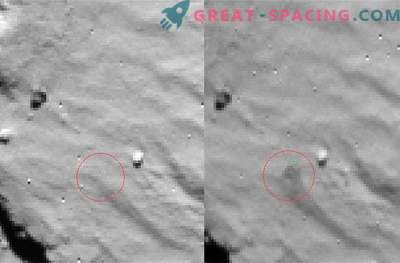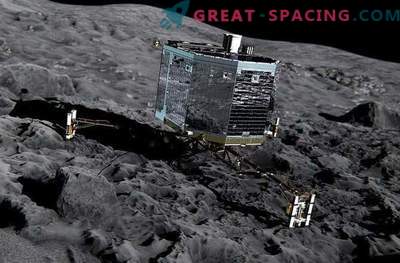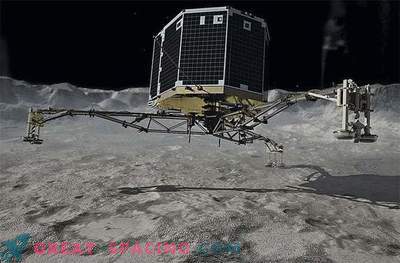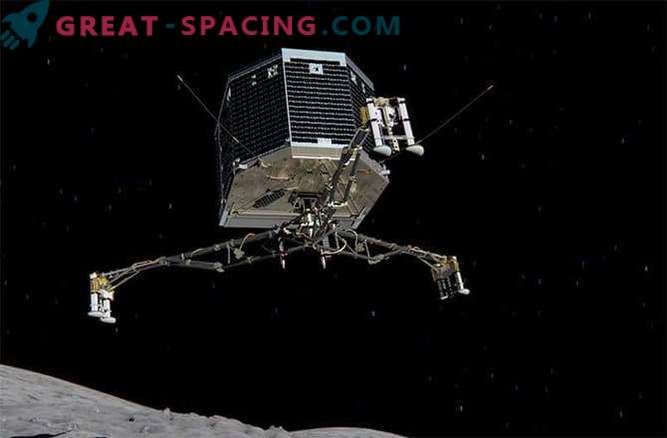
Do you know the main terrestrial problem? More precisely, the problem is extraterrestrial! During the descent to the surface of the comet under the landing gear of the apparatus, an accidental collapse of the ground can occur, which can completely change the trajectory of your movement, forcing it to rotate, as if in slow motion.
This, according to the engineers of the Rosetta mission, happened last month with the Philae descent vehicle when it tried to descend to the surface of comet 67P / Churyumov-Gerasimenko. In itself, this event is historical in nature and is a triumph of science, despite the loss of control over the apparatus, which is currently in a state of hibernation. Scientists believe that no matter what, luck will be on the side of Philae.
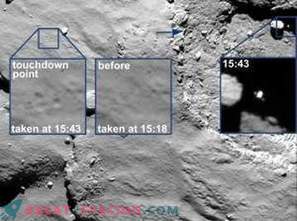
Images of OSIRIS showing the location of the comet after landing. Click image to enlarge
The Philae 100-kilogram module traveled aboard the Rosetta for more than ten and a half years through the entire inner part of the solar system until it was undocked in the morning of November 12, 2014, along with Rosetta in orbit. The process of descent to the surface of the comet took about seven hours. The whole world welcomed the confirmation of the landing, which was received at 16.03 GMT. And the general jubilation did not spoil even the fact that the apparatus bounced off the comet's surface several times, moving to unknown points on the shadow side of the cosmic body. The magnetic field data obtained using a Rosetta magnetometer and a plasma monitor (ROMAP) installed at the end of a small protrusion on the Philae “head” provide an informative basis for building versions of the causes of the incident. In particular, it is assumed that after the first rebound one of the supports of the landing module caught on an obstacle (possibly a crater) on the surface of the planet. In conditions close to zero gravity and full vacuum, even such a small contact was enough for the machine to begin to rotate randomly and move to a point remote from the planned landing site.
“It was not a landing, because there was no vertical deceleration. This fact is clearly captured in the testimony of the magnetometer, - said one of the main researchers Hans-Ulrich Oster, - We believe that Philae most likely touched the comet's surface with only one of his chassis, which led to the fall of the descent vehicle. It was not a simple turn around the Z-axis of the landing module. We observed a much more complex motion with a strong signal in changing the magnetic field. ”
Considering this scenario (which was discussed at the stage of preliminary agreement between the scientists of the mission), we can safely say that the likelihood of returning Philae to the correct position with respect to the comet is a real miracle. And is it worth talking about how amazing was the fact that the device was able to receive and transmit data for all major scientific tasks before its batteries completely drained. Despite the fact that Philae is currently in a low-power sleep mode, it is possible that in the end the device will be able to get enough sunlight to charge the battery and continue working on comet 67P, which will approach the sun in the first half of 2015. In the end, the presence of the device in the shade to a certain extent helps it avoid overheating and prolongs its service life.
These are happy accidents!

